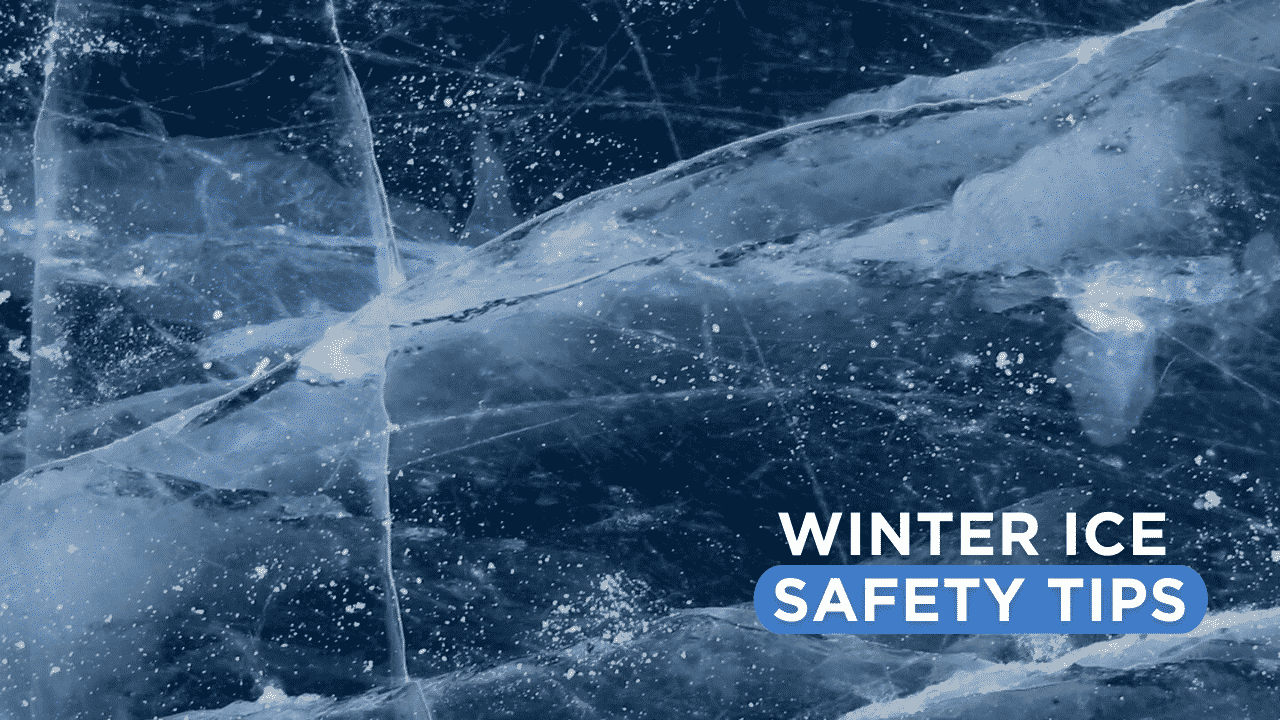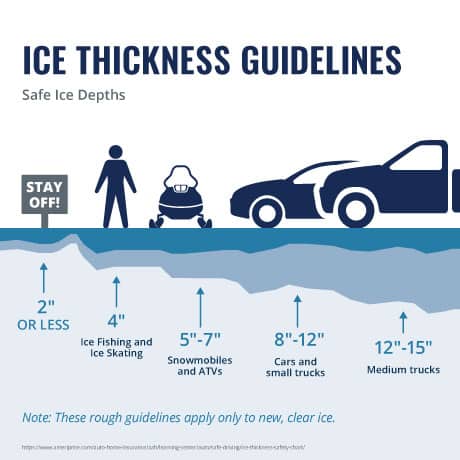
Ice Safety Tips
- When riding a snowmobile, always verify the ice conditions and ensure that ice is at least 25 centimeters thick before snowmobiling on it. Snowmobiles are heavy and require thick ice for support.
- Know Your Ice: Clear, blue ice is the strongest; grey ice is unsafe as it indicates the presence of water. Avoid ice that has recently frozen, thawed, and then frozen again. White ice has air or snow within it and should be considered suspect for recreational use.
- Avoid traveling on ice at night or when it is snowing. Reduced visibility increases your chances of driving onto an open or weak ice area. This is a frequent cause of ATV- and snowmobile-related drowning.
- Never go onto ice alone. A companion may be able to rescue you or go for help if you get into difficulty. Before you leave the shore, tell someone where you are going and what time you expect to return.
- Stay off river ice and avoid the narrows between lakes. River currents and moving water at the narrows where one lake flows into another can quickly change ice thickness or cause ice to be much thinner than in other locations on the river or on the lake.
- If possible, wear a thermal protection buoyant suit or a lifejacket. If you don’t have a thermal protection buoyant suit, wear a lifejacket or PFD over your snowmobile suit or layered winter clothing to increase your survival chances if you go through the ice.
- Take safety equipment with you. Pack ice picks, a rope, and a small personal safety kit (i.e., a pocket knife, compass, whistle, fire starter kit, and cellphone) in your pockets or backpack.
- Always supervise children playing on or near ice. Children playing on or near ice should always be with a companion and under adult supervision.
What To Do If Someone Falls Through The Ice
In the event that someone falls through the ice, remember these four important steps – they could save a life:
- Do not run out onto the ice near the victim! Well-meaning friends can become victims when they fall through the ice as well. Avoid approaching the hole in the ice unless the victim is unconscious or in imminent danger of slipping into the water and drowning.
- Call for help. Call 911 to have trained rescuers/paramedics sent to the scene. Do this very quickly, and not leave the victim at any cost.
- Tell the victim to remain calm. Encourage the victim to control their breathing to stay calm. They will most likely be hyperventilating. Advise them to take deep, slow breaths through pursed lips.
- Help them help themselves. Encourage the person to swim to the edge and use their elbows to lift themselves out of the water as much as possible –the main objective is for them to just get a grip on the ice so they conserve energy while they wait for help to arrive.
With thanks to the Insurance Bureau of Canada, Red Cross Canada, and CONNECT.






